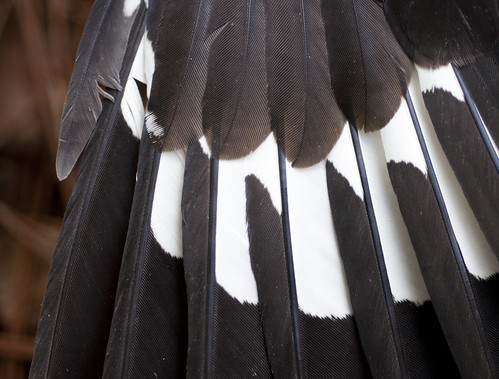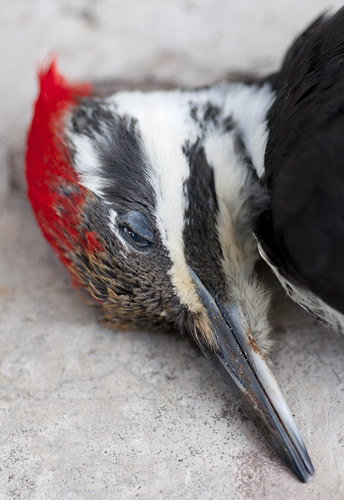Last week, a friend presented to me something pretty incredible. It was an animal I've usually only seen in fleeting moments, a shy creature that is synonymous with the North Woods: a Pileated Woodpecker. A female, she had been found as roadkill along US 2 near Brevort. So recent had she been struck, her body was not yet stiff when retrieved from the side of the road.
With the exception of the Ivory-Billed Woodpecker (which is considered by most to be extinct), the pileated woodpecker is the largest of its kind in North America. It's about the size of a crow, but it's at that and their shared black backs where the resemblance ends. Pileated woodpeckers have a long, pointed beak and reptilian, almost dinosaur-like eyes. Their toes end in large, curved talons, perfect for grasping bark, and their black wings are adorned with a broad, white bar. Most recognizable is the bright, red crest.
Female pileated woodpeckers are distinguished from the males by their smaller crests, as well as the lack of a second red mark, which runs from the corner of the beak to the neck.
The white markings on the wings are visible only when the bird takes flight.
This pileated woodpecker will soon be a part of the bird collection at the University of Michigan's Museum of Zoology.
There is still much portraiture to be taken of this extraordinary bird! I will soon follow this entry up with another set of photographs.







What a hauntingly beautiful eye...almost looks human. Thank you for this emotional post, as usual your photography is incredible. :)
ReplyDelete